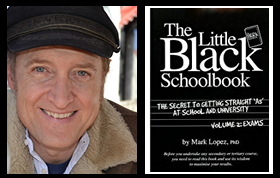Dr Mark’s The Meaning in a Nutshell
Anna Ziegler, Photograph 51 (2015)
The feminist play, Photograph 51 (2015) by Anna Ziegler, presents a revisionist account of the ground-breaking discovery in 1953 of the structure and nature of DNA by the scientists James Watson and Francis Crick to argue that they dishonestly and dishonourably capitalised upon the research data and analysis of a talented woman scientist, Rosalind Franklin, who was overlooked and denied her recognition and glory largely due to the sexism in a male-dominated workplace and in the world of science. Watson, and Crick, and also Maurice Wilkins who was a colleague of Rosalind Franklin, received Nobel Prizes in 1962 but Franklin was overlooked.
Following in the footsteps of several feminist historians, the play by Ziegler contributes to the raising of Rosalind Franklin to the status of feminist icon by presenting her as a victim of sexism in a male-dominated workplace. She is presented as intellectually gifted, extremely hard-working and utterly devoted to her research work but as having had to deal with disrespectful, disparaging remarks about her appearance and attire from her male colleagues. She was also excluded from the male-only staff dining area and other informal male gatherings and therefore left out of important discussions that could have helped advance her science and career. She was subjected to sexual harassment by a senior male colleague who was infatuated with her. Their resulting frosty relationship reinforced her desire to work alone. She is presented as becoming abrasive, defensive, and confrontational to the point of rudeness in response to the unjust treatment she received by her male colleagues. Not only do they use sexist language behind her back and give her a disrespectful nickname ‘Rosy’ which she resents, they even secretly acquire her research data and analysis and use it to further their scientific discoveries without giving her appropriate attribution or recognition. Correspondingly, the play also suggests that they did not share their work with her. The play depicts her as having been very close to having made the discovery of the structure and nature of DNA by herself in order to suggest that access to some of her colleagues’ research material and analysis could have been enough for her to have beaten the men in the race to discover the structure and nature of DNA. Instead, the men capitalised on her data and analysis to go on to achieve scientific glory as shared winners of the Nobel Prize.
The play notes that Rosalind Franklin was Jewish and from a wealthy background. She was working in an environment that had few Jewish people at that time and when many of the male researchers were on meagre incomes. This is to suggest that a mild anti-Semitism and some degree of class resentment also contributed to her alienation and the injustices she experienced due to the attitudes and behaviour of her male colleagues.
In addition, although the play takes care to justify the difficult behaviour of Rosalind Franklin as understandable and justifiable in the face of the treatment she received from most of her male colleagues, it does suggest additional factors that contributed to why Franklin was poorly treated and insufficiently recognised and awarded. The play depicts Franklin as resenting having to be anyone’s subordinate and as having difficulty working as part of a team. She preferred to work alone. She was also fastidious in her research process, preferring detailed mathematical reasoning and caution rather than designing theoretical models and publishing her work as soon as possible. Her meticulousness, lack of daring and unwillingness to risk publicly making a mistake also held her back from beating the men to making the key discoveries. By contrast, Watson and Crick were willing to risk making mistakes, publishing a model of the DNA in 1952 that was proved false before bouncing back in 1953 to produce a model that was shown to be valid.
Photograph 51 was an image produced by crystallographic photography that revealed the X shape of the double helix of DNA. It was a significant piece of research data that helped scientists to determine the structure and nature of DNA. Rosalind Franklin was a specialist in crystallographic photography and her PhD student Raymond Gosling took the image while working under her supervision. The play presents Photograph 51 as a ‘eureka moment’ in the history of science that enabled Watson and Crick to decisively refine their theory, yet the play also argues that it was Franklin’s evidence that paved the way to these men’s success, while she missed out on sharing in this success. Photograph 51 therefore represents not only a moment of scientific discovery but also an injustice dealt to a woman scientist in a male-dominated field of endeavour.
Student resources by Dr Mark Lopez
© Mark Lopez 2019 All RIGHTS RESERVED
The purpose of the concise notes of Dr Mark’s The Meaning in a Nutshell is to provide much needed help to students seeking to unlock the meaning of the texts with which they have to deal. (More elaborate notes are provided in lessons as part of my private tutoring business.)
Subject: Photograph 51 meaning, Photograph 51 themes, Photograph 51 analysis, Photograph 51 notes
